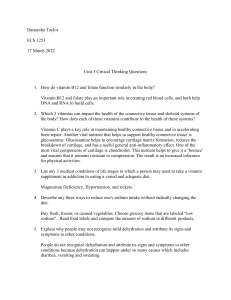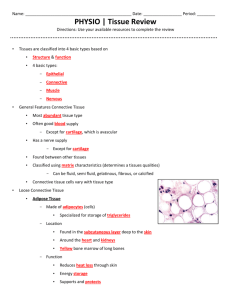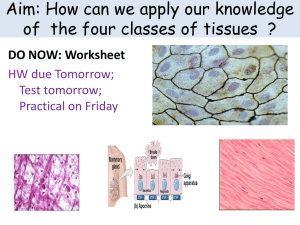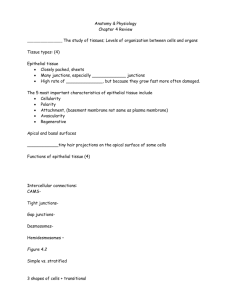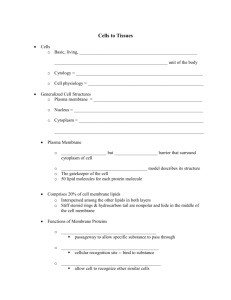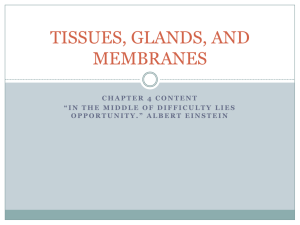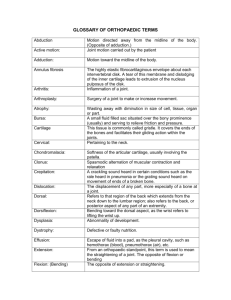BIO201 Crimando Vocab 2 BIO201 Histology Vocabulary Review
advertisement
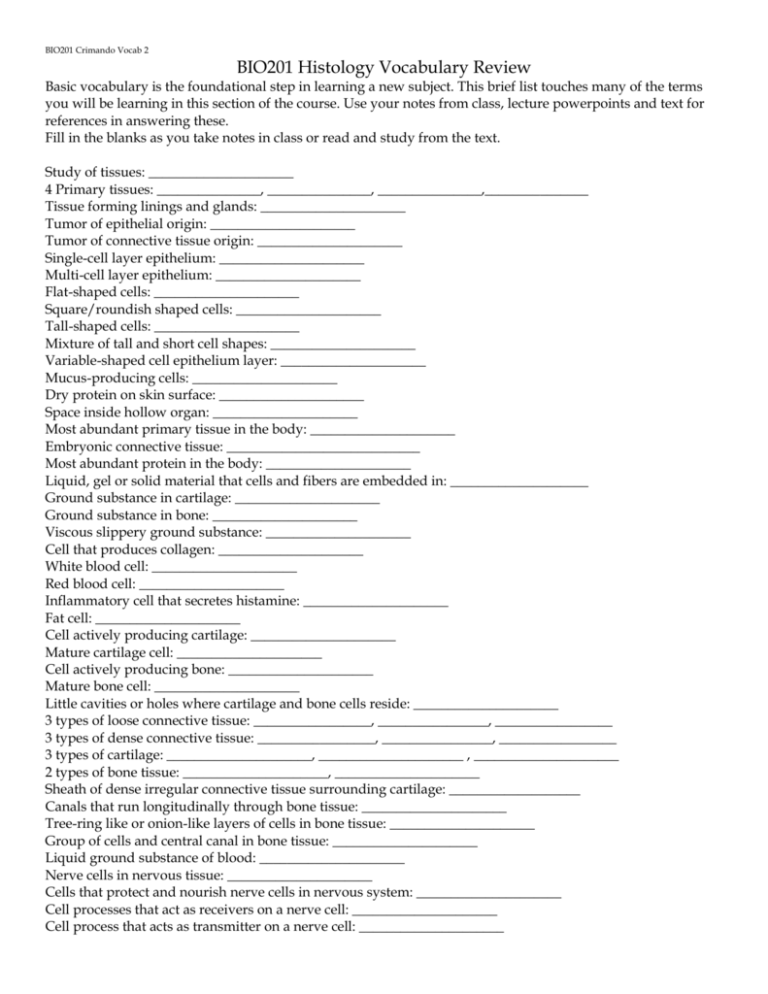
BIO201 Crimando Vocab 2 BIO201 Histology Vocabulary Review Basic vocabulary is the foundational step in learning a new subject. This brief list touches many of the terms you will be learning in this section of the course. Use your notes from class, lecture powerpoints and text for references in answering these. Fill in the blanks as you take notes in class or read and study from the text. Study of tissues: _____________________ 4 Primary tissues: _______________, _______________, _______________,_______________ Tissue forming linings and glands: _____________________ Tumor of epithelial origin: _____________________ Tumor of connective tissue origin: _____________________ Single-cell layer epithelium: _____________________ Multi-cell layer epithelium: _____________________ Flat-shaped cells: _____________________ Square/roundish shaped cells: _____________________ Tall-shaped cells: _____________________ Mixture of tall and short cell shapes: _____________________ Variable-shaped cell epithelium layer: _____________________ Mucus-producing cells: _____________________ Dry protein on skin surface: _____________________ Space inside hollow organ: _____________________ Most abundant primary tissue in the body: _____________________ Embryonic connective tissue: ____________________________ Most abundant protein in the body: _____________________ Liquid, gel or solid material that cells and fibers are embedded in: ____________________ Ground substance in cartilage: _____________________ Ground substance in bone: _____________________ Viscous slippery ground substance: _____________________ Cell that produces collagen: _____________________ White blood cell: _____________________ Red blood cell: _____________________ Inflammatory cell that secretes histamine: _____________________ Fat cell: _____________________ Cell actively producing cartilage: _____________________ Mature cartilage cell: _____________________ Cell actively producing bone: _____________________ Mature bone cell: _____________________ Little cavities or holes where cartilage and bone cells reside: _____________________ 3 types of loose connective tissue: _________________, ________________, _________________ 3 types of dense connective tissue: _________________, ________________, _________________ 3 types of cartilage: _____________________, _____________________ , _____________________ 2 types of bone tissue: _____________________, _____________________ Sheath of dense irregular connective tissue surrounding cartilage: ___________________ Canals that run longitudinally through bone tissue: _____________________ Tree-ring like or onion-like layers of cells in bone tissue: _____________________ Group of cells and central canal in bone tissue: _____________________ Liquid ground substance of blood: _____________________ Nerve cells in nervous tissue: _____________________ Cells that protect and nourish nerve cells in nervous system: _____________________ Cell processes that act as receivers on a nerve cell: _____________________ Cell process that acts as transmitter on a nerve cell: _____________________ 3 types of muscle tissue: __________________, __________________ , __________________ Stripe pattern of light and dark bands in some muscle tissue: _____________________ End-to-end junctions connecting cardiac muscle cells: _____________________ Duct-glands: _____________________ Ductless glands secreting hormones: _____________________ Replacement of damaged cells with same type of cells: _____________________ Replacement of damaged cells with scar tissue mostly collagen fibers: ___________________ Soft, capillary-rich new tissue formed during tissue repair: _____________________ Vitamin that especially enhances epithelial growth: ______________________ Vitamin that especially enhances energy production and red blood cell production: _____________________ Vitamin that especially enhances collagen and connective tissue production: _____________________ Vitamin that especially enhances calcium uptake from diet: _____________________________ Vitamin that especially acts as antioxidant, reducing cell damage from oxygen radicals: __________________ Shrinkage of tissue: _____________________ Pathological death of tissue: _____________________ Sudden death of tissue due to being cut off from blood supply: _____________________ Death of tissue due to insufficient blood supply, usually with infection: _________________ Programmed cell death: _____________________

